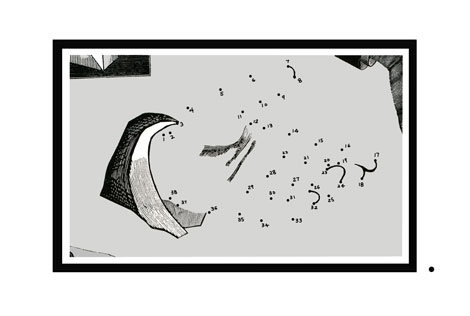The influence of money on art, you may have heard, is pernicious—or toxic, or corrupting or it is another word that means “bad.” Especially these days. You may have heard that.
And why not? It’s bad on everything else. It’s even bad on people who have it—stockbrokers have started jumping out of windows again. But while seeing a thing that once was a guy lying in a pool of himself on a Hong Kong sidewalk 30 feet under the window he just left is a pretty clear sign, the signs in art are not so clear.
To hear people tell it, it is money that is responsible for art that’s big (it advertises itself in the crowded market like a billboard and needs money to get that big in the first place) and it’s money that’s responsible for art that’s small (it can easily be taken to—and brought home from—art fairs), it’s money that’s responsible for abstract art (its lack of concrete imagery renders it incapable of offending anyone or demanding they grapple with issues of content) and it’s money that’s responsible for art with recognizable stuff in it (pictures of mere things pander to the public need for easy consumption), it’s money that’s responsible for the death of painting (the money-chasing Disney atmosphere bent on bringing in museum dollars isn’t conducive to quiet rectangles) and it’s money that’s responsible for the continued vigor of painting (the moneysheep clutch tightly to their outmoded ideas of what belongs in museums), it’s money that results in safe and de-politicized art (the Powers can’t stand to be critiqued) and money that results in controversial art (endorsing shock and critique from the powerless allows collectors to pose as sophisticates without any consequences on their wallets), it’s money that makes art ugly (no one can afford to spend their time or love on things for their own sake) and it’s money that makes art beautiful (prettiness unfairly draws eyes away from worthier work), it’s money that’s responsible for artists who never change their work (they are feeding a known collector base) and it’s money that’s responsible for artists who change their work (chasing bucks they sway to the rhythm of fashion), it’s money that makes museums double down on old masters (they bring in crowds) and it’s money that makes them heedlessly pursue the Next Big Thing (they all want to make headlines), it’s money that makes shows out of things that aren’t art (Faberge and BMW are big sponsors) and money that defines only some objects worth looking at as art (the business needs to create an impression that nonfunctional objects have a unique importance).
In fact, a careful survey of recent critical literature reveals a string of massive coincidences: the art that has been most distorted by capitalism always turns out to be the art that whoever’s writing didn’t like anyway.
And more perniciously (or “more toxically”, “more corruptingly”, or just “worse”) this lazy assumption nearly always cloaks a deeper conservatism: the conviction that things didn’t used to be like this. You can’t have an idea of the influence of money unless you have a picture of what an unmoneyed art world looked like. Oh for the days when you could get ahead by drawing a pope or the sister of a streetcar mogul. Critics who decry anything they don’t like as a result of the influence of money aren’t engaging in a Marxist critique—they’re engaging in a nostalgic fantasy. They don’t want to go back in time to the days of tyrants and robber barons, they want to go back to an early version of themselves: to the time when they were young and the only art they knew about was (by definition) art they liked so much that it made them want to learn all about art.
What came into their consciousness afterward—what they saw after they took the plunge with all the underwater cameras and close-up lenses that an education in- or daily contact with- their field of choice demands–is likely to contain a not-insignificant proportion of not-what-they-signed-up-for. Of not-the-stuff that excited them. Not-Michelangelo, not-Picasso, not-Oldenburg, not-Hirst or not- whatever they previously and wholly naively had accepted as being the pillars of a canon that somehow formed not because of bloody political and commercial struggle and because when it came time to write art histories the Franz Halses were basically just luckier than the Alessandro Algardis, but because of some Eternal Essential Goodness in them. People who would like a Hals if they saw one it do get to see one—and they become art writers. People who would like an Algardi, if they saw one don’t ever see one, and don’t realize art even produces things for them—and go do something else. The new and obscure art is judged by a self-selecting group who got into the field because they liked the old and famous art. And, unshockingly, they reach out for a single easy explanation for all the inimical awfulness of a world where not everybody likes the same things as them—and find an invisible hand that has always been there.


